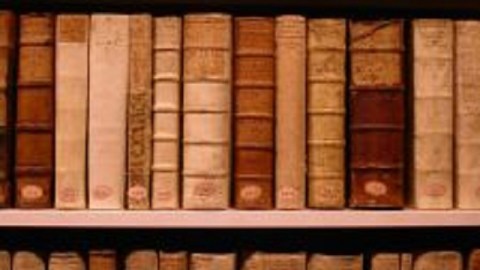Bibliophilia: The Best Art Books of 2010

2010 was a great year for art publishing, with many presses producing high quality works not only in terms of reproducing great art, but also in publishing important thinkers on what the art of the past and present means. Here is one reviewer’s highly subjective, highly personal list (in no particular order) of some of the biggest “big thinks” in the art publishing world of the past year.
James Elkins, Chinese Landscape Painting as Western Art History(University of Washington Press): “This book is brilliant,” Jennifer Purtleexclaims in her introduction to Elkins’ latest, “except for the places where it is dead wrong.” Sometimes confounding, sometimes infuriating, but never boring, Elkins’ work may be the biggest “big think” in this bunch. (My Review)
Michael Fried,The Moment of Caravaggio (Princeton University Press): Friedstrays from his usual field of French painting to take on Michelangelo Merisi da Caravaggio as part of the intensive reevaluation on the 400th anniversary of the artist’s death. A fresh look with fresh, deeply theoretical eyes. (My Review)
Jim Trombetta, The Horror! The Horror!: Comic Books the Government Didn’t Want You to Read!(Abrams ComicArts): Asobering look at when the government tried to shut down the comic book industry and a highly entertaining view of the height of the horror genre, accompanied by Trombetta’s knowing commentary. (My Review)
R. Tripp Evans, Grant Wood: A Life: Evansbrings the artist of the heartland out of the closet and into the 21st century. Grant Wood emerges as a victim of his own success in this masterful biography of the man and examination of homophobia in American art. (My Review)
James Westcott, When Marina Abramović Dies: A Biography (MIT Press):Marina Abramović, star of this year’s blockbuster MoMA exhibition, The Artist Is Present, is present in this adulatory yet brutally honest biography written by a member of her inner circle. (My Review)
Richard Wright (Rizzoli): The first monograph on unique minimalist painter Richard Wright collects the best writing on the artist along with a fantastic selection of photographs that bring this difficult, site-based artist to a larger audience. (My Review)
Mary Bergstein,Mirrors of Memory: Freud, Photography, and the History of Art (Cornell University Press): Sigmund Freud, father of the “talking cure” of psychoanalysis, took inspiration from the arts. Bergstein suggests that when we talk of Freud we should think of pictures, specifically photography. (My Review)
Stephanie D’Alessandro and John Elderfield, Matisse: Radical Invention, 1913-1917 (Yale University Press): Companion to the MoMA exhibition, this catalog studies how from the time after his return to Paris from Morocco in 1913 to his departure to Nice in 1917, Henri Matisse lived like a human free radical, flourishing in instability and reacting to everything around him, as if driven by some unpaired aspect of his artistic self longing to find its match. (My Review)
Thomas S. Hines, Architecture of the Sun: Los Angeles Modernism 1900-1970 (Rizzoli):Hines, Professor Emeritus of History and Architecture at UCLA, sees L.A. as a prime “consumer and translator of modernist architectures developed elsewhere,” and, thus, “presents a seductive case study of the effect upon modernism of regional patterns and imperatives—and vice versa.” California dreaming in steel, glass, and stone thus continues the dreams of European modernists while simultaneously engaging the local flavors of the City of Angels. (My Review)
Brian Fies, Whatever Happened to the World of Tomorrow? (Abrams ComicArts): “Ad astra per aspera,” shout the dynamic superheroes of Fies’ graphic novel over and over. “Through hardships to the stars.” Fies story calls us to keep reaching for the stars despite the hardships of the past and the present. Fies writes a document of faith lost and faith restored—something that we need more of every day. (My Review)
Elizabeth Cowling and Richard Kendall, Picasso Looks at Degas (Sterling and Francine Clark Art Institute): Companion to the exhibition at the Sterling and Francine Clark Art Institute that examined the life-long presence of Degas in Picasso’s art. From images of dancers to studies of bathers, the influence of Degas on Picasso to the end of his life is unmistakable. (My Review)
Patricia B. Santora, Margaret L. Dowell, and Jack E. Henningfield (editors), Addiction and Art(Johns Hopkins University Press): “Science gives us the tools, but art gives the inspiration and the drive to make a difference in reducing addiction and helping people achieve recovery,” says the introduction to this important book on how art can heal. “What is more important—the tools or the drive? They are inseparable.” (My Review)
Roger Benjamin, Claudia Einecke, Guy Cogeval, Isabelle Gaëtan, Emmanuelle Héran, John House, Virgine Journiac, Martha Lucy, Laurence Madeline, Monique Nonne, and Sylvie Patry, Late Renoir (Hatje Cantz): Companionto the Philadelphia Museum of Artexhibition, this catalog looks at Pierre-Auguste Renoir’s final years not only to place him in the pantheon beside Vermeer, Raphael, Titian, and others, but also to demonstrate how the arthritic artist inspired a new generation. “The pain subsides,” Renoir responded to questions concerning his painting with arthritis, “but the beauty remains.” (My Review)
Carter E. Foster (editor), Edward Hopper (Skira/Rizzoli): A new look at Hopper from a more European perspective, with interesting approaches to into his drawings, his subtle eroticism, his European influences, and even his influence on filmmaking, including the films of Alfred Hitchcock, accompanied by a marvelous selection of illustrations. One of the best Hopper books in years. (My Review)
Peter Galassi, Henri Cartier-Bresson: The Modern Century (MoMA): Companion to the MoMAexhibtion, this book gathers together Cartier-Bresson’s greatest hits in a large format for the first U.S. retrospective in three decades of the renowned photographer. (My Review)
Carl David, Bader Field: An unforgettable story of a family united by the art gallery they ran for four generations and almost torn apart by the death of the patriarch and suicide of one son. This touching memoir is as much about art as it is about life and living through adversity. (My Review)
Anne Distel, Renoir (Abbeville Press): A mammoth monograph on the Impressionist who felt that he had to defend his love for pretty pictures. More than just a maker of pretty faces, Renoir remains one of the great forefathers of modern art. Distel’s text and the generous selection of illustrations make this the must-have coffee table book for Renoir lovers. (My Review)
Craig Yoe (editor), The Art of Ditko (IDW Publishing): The reclusive artist who created the look of Spider-Man, Doctor Strange, and others is revealed in this examination of his earlier work. Yoe, the archaeologist of comic artistry, digs up Ditko gold from the age of pulp comics. (My Review)
Holm Bevers, Lee Hendrix, William W. Robinson, and Peter Schatborn, Drawings by Rembrandt and His Pupils: Telling the Difference (Getty Publications): A brilliant untangling of the long history of misattributions of drawings done by the master and his pupils. Both Rembrandt and his followers come to life in these studies. (My Review)
[Many thanks to all the publishers and museums that provided me with review copies and other press materials in 2010. You all make my job so much easier.]





